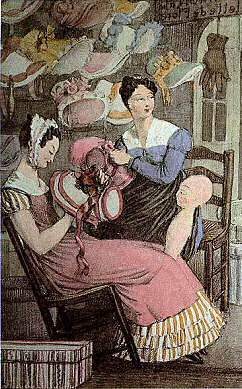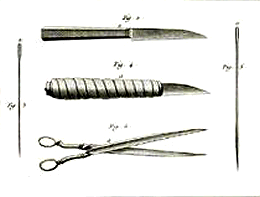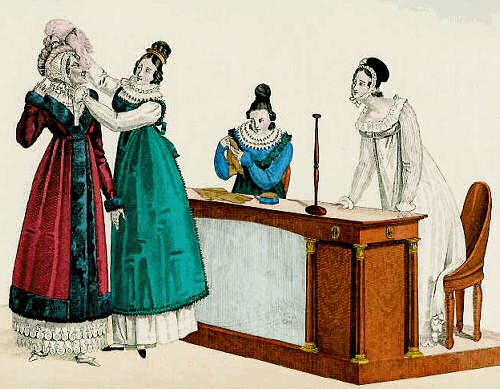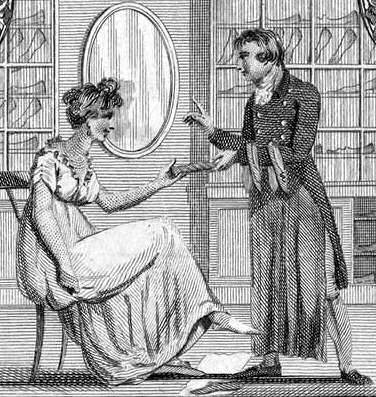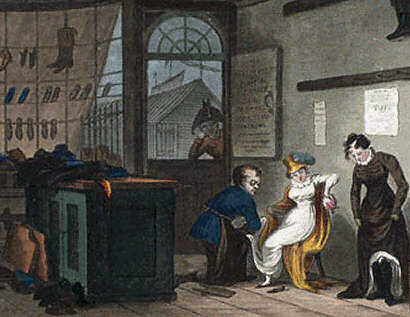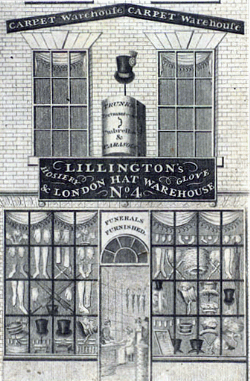|
Illustrations:
7. The Modiste (La marchande des modes, Le matin) by François Boucher (1703-1770) C. 1746 Oil on canvas, now in Wallace Collection, Hertford House, London.
8.Detail, French hat shop, 1822, by John James Chalon (1778-1854)
9. Costume Parisiene 1817
10. Diderot. Plumassier Panachier. [ Folio, Paris: De l'Imprimerie des Edie, 1771. 1 p., 5 plates.
11. "Le Bon Genre Fashion Shop" 1817
12. Detail, trading card, Wood. Ladies Shoe Manufacturer c.1815
13. Boot & Shoe Shop, Ackermann 1813
14. Lillington's of Birmingham, trading card, 1800-1820
____________________________________________________________________
Notes on the text:
l: Trade card, text reproduced in 'Regency London' by Stella Margetson, published 1971 Cassell.
m: Madame Lanchester, a famous London Modiste, published the shortlived fashion magazine 'La Miroir de la Mode' 1803-04.
Mack and Bennet, The Lady's Magazine, October 1805: "We are indebted for the above DRESSES to the favour of MACK and BENNET, milliners, and fancy-dress makers, New Bond--street."
Mrs. Shabner, advertised in La Belle Assemblee 1812
Mrs. Bell of 22 Upper King St., fashion plate, Magazine des Modes, 1814.
n: Jane Austen's letter to her sister Cassandra, send Sunday June 2, 1799 from 13, Queen's Square, London. From Jane Austen's Letters, Deidre Le Fay collection.
o:Trading card c. 1815 Text: 'Wood. Ladies Shoe Manufacturer, Retails & for Exportation; No 47 Cornhill London
NB Large Assortment of Ladies fashionable Shes always on Sale'
p: James Devlin: The Guide to the Trade, The Shoemaker (London, 1839)
q: Trade Card c. 1815 Text: 'Cheap & Fashionable Boot & Shoe Warehouse No 8, Lower Holborn, London
B. Clarke, has furnished the above Warehouse with a large & fashionable assortment of Boots & Shoes which he intends to sell for ready Money only at the following Prices,
Jockey Boots 1-0-0
Military Do 2£-4s-0d
Hessians Do 1£-18s-0d
Bacjstrap Do 1£-16s-0d
If made to measure 4s. extra
Dress Shoes 11s-6d
Light Do 10s-6d
Strong Do 11s-6d
If made to measure 2s. extra
Mercants, Captains & Country dealers supplied with every Article in the Trade, on the most Liberal Terms.'
r: Catalogue of the Papers of William Cavendish-Scott-Bentinck, 4th Duke of Portland.
s: Trading card, Text: 'A. M. Cohen. Umbrella & Parasol Maker, Whoelsale and Retail. No 26 Widegate Street, Bishopsgate, London. NB. Country Dealers supplied on the shortest Notice and on reasonable terms. Umbrellas &c. neatly repair'd.' Similar card with address No 25 Chancery Lane, Fleet Street, London and addred text 'Foreign orders executed on the shortest notice.' Neither card is dated. However, the engraver William Newman was in business 1802-23 so these two cards can be dated to that period as well.
t: Trading card, c 1802 Text: 'John Arpthorp, Stay & Corsett Maker, No 278, near great turnstile, High Holborn. NB Childrens Stays on a new Configuration, perfectly cal'y. light & genteel.'
u: Trading card, 1807 Text: 'G. Richardson OPTICAL & MATHEMATICAL Instriment Maker, No 98 Leadenhall Street, LONDON. (Late Foreman to Mr Cha.s Lincoln.) Real Manufaturer of the improved Telescope for Day or Night Sextants. Quadrants and Compasses of the latest improvements, also Spectacles & Reading Glasses curiously adapted to suit all sights, either on Glass or Brazil -Pebbles. Merchants and Captains supplied at the most moderate Terms.'
v: Trading card, 1800-1820, Text: 'LILLINGTON's Hosiery, Glovers & LONDON HAT WAREHOUSE, No 4. CARPET WAREHOUSE. Trunks, Umbrellas & Parasols. Funerals Furnished'
w: Emma by Jane Austen, published 1816, available as e-text |
